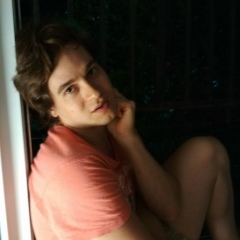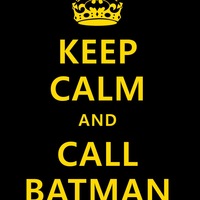"Рома" Куарона, 2018
По-моему, интересно говорить о том, какую точку зрения Куарон выбирает для рассказа о жизни, детстве, то есть это вопрос киноязыка. Это вопрос, который в любом случае решает автор, когда он хочет рассказать историю. Взгляд, выбранный Куароном, ни магический, ни социальный, а примерно наблюдательный (бихевиористский?): показ 'объективной' реальности и видимо максимально реалистичных разговоров.
Символизм я уловил в разговорах няни с ее Пушкиным (белобрысым прототипом Куарона) про смерть, изображении моря и воды (возможно как женской стихии), и воздуха (самолет). Еще есть земля и огонь: пожар и поля. И человек во время пожара песенку поет — интересно, о чем, это может быть важно для понимания какой-то глубокой идеи автора. Пожар, кстати тушат водой (камень ножницы бумага). Получается, что речь идет о традиционных четырех стихиях, только не очень понятно, что именно о них говорится.
Для того, чтобы назвать его фильмом о социальных проблемах, в нем слишком мало социальных проблем (политика, бедность, неравенство показаны, но на них нет акцента, который остается на главной героине, чей путь лежит по краю этих больших общественных процессов). Для драмы или трагедии не хватает драмы или трагедии (да, главная героиня служанка, но ее положение лучше, чем у ее матери и у ее любовника в их деревнях; да, мертвый ребенок, но она его и не хотела, как потом признается; а семья о ней заботится). Единственно на положении женщин здесь да таки-сделан акцент: единственный положительные герои — это, кажется, собака и белобрысый мальчик, а даже его два старших братца дерутся, подслушивают и бьют стекла (плохо ли это? Но остальные важные двое мужчин точно муд*ки).
Конечно, можно сказать, что каждая рассказанная история — это лишь один из вариантов развития событий в данном мире и что вот та версия, те события, которые показаны, подразумевают, что были и другие всевозможные варианты (кто-то и правда утонул, любовник наоборот не бросил, а семья, напротив, выгнала служанку, узнав о ее беременности). Но черт его знает: это применимо ко всем историям (вот, например, Russian Doll как раз и рассматривает варианты развития событий, какие из них поворотные, а какие несущественны), эту мысль можно и сюда вписать, но может тут ее и нет. Однако поскольку она на меня набрела во время просмотра и этого фильма тоже, я ее тоже излагаю.
Довольно много можно сказать о внутреннем мире главной героини, настолько лапидарным, то есть эффективным, оказывается выбранный Куароном киноязык. Она не наивна: не питает иллюзий насчет своего любовника — прямо сказала хозяйке, что отец ребенка сбежал (здесь для передачи ее состояния еще используется символ в виде самолета, в начале и конце фильма летящего по небу, а тут падающего на экране в кинотеатре в момент признания о беременности). Она умеет преодолевать трудности (беременность) и выбирает не слушать свои страхи, а поступать ответственно (спасение детей несмотря на боязнь воды). Добра (спасает детей, утешает их). Она честна (не подслушивает за хозяйкой по смежному телефону, хотя могла бы) и деликатна (закрывает за собой дверь на кухню после объяснения ее хозяйки с мужем). Можно ли назвать получившийся портрет полным?
Также этот киноязык не допускает изображения внутреннего мира с привлечением фантастических элементов, как в фильме о Гарри Поттере того же режиссера. И без психологизма, то есть герои не объясняют свои чувства словами, только действиями и картинкой (типа такой вот естественный киноязык в мире, в котором люди не умеют разговаривать про чувства). Выходит похоже на римские портреты: в отличие от греков, которые стремились к идеалу человеческой красоты, римские мастера ваяли то, что видели, и умели изобразить внутренние бури или их следы с помощью игры поверхности мрамора. Ну и символизм.
Черно-белым может быть этот фильм сделан в ответ на мысль, что мир вообще-то не черно-белый, а состоит из мильона оттенков, которые все равно остаются, даже если не изображать его кричащими красками ярких событий (никто из главных героев ни умирает, ни делает ничего такого же драматического.
Ключ, мне кажется, в рассуждении мастера боевых искусств о чуде, которое единственные, кто могут изобразить из себя, это главная героиня и сам мастер. Может быть, в духе того, что жизнь — это борьба, и можно бороться не через боевые искусства, а через 'просто' жизнь. Третий, кто постиг это чудо, конечно, сам Куарон с его манерой, киноязыком, бесконечно балансирующим на стыке этих пластов: социальное/личное, преходящее/вечное, мужское/женское, психологизм/символизм и может каких еще других.
https://youtu.be/sKVYRtE-kXI
По-моему, интересно говорить о том, какую точку зрения Куарон выбирает для рассказа о жизни, детстве, то есть это вопрос киноязыка. Это вопрос, который в любом случае решает автор, когда он хочет рассказать историю. Взгляд, выбранный Куароном, ни магический, ни социальный, а примерно наблюдательный (бихевиористский?): показ 'объективной' реальности и видимо максимально реалистичных разговоров.
Символизм я уловил в разговорах няни с ее Пушкиным (белобрысым прототипом Куарона) про смерть, изображении моря и воды (возможно как женской стихии), и воздуха (самолет). Еще есть земля и огонь: пожар и поля. И человек во время пожара песенку поет — интересно, о чем, это может быть важно для понимания какой-то глубокой идеи автора. Пожар, кстати тушат водой (камень ножницы бумага). Получается, что речь идет о традиционных четырех стихиях, только не очень понятно, что именно о них говорится.
Для того, чтобы назвать его фильмом о социальных проблемах, в нем слишком мало социальных проблем (политика, бедность, неравенство показаны, но на них нет акцента, который остается на главной героине, чей путь лежит по краю этих больших общественных процессов). Для драмы или трагедии не хватает драмы или трагедии (да, главная героиня служанка, но ее положение лучше, чем у ее матери и у ее любовника в их деревнях; да, мертвый ребенок, но она его и не хотела, как потом признается; а семья о ней заботится). Единственно на положении женщин здесь да таки-сделан акцент: единственный положительные герои — это, кажется, собака и белобрысый мальчик, а даже его два старших братца дерутся, подслушивают и бьют стекла (плохо ли это? Но остальные важные двое мужчин точно муд*ки).
Конечно, можно сказать, что каждая рассказанная история — это лишь один из вариантов развития событий в данном мире и что вот та версия, те события, которые показаны, подразумевают, что были и другие всевозможные варианты (кто-то и правда утонул, любовник наоборот не бросил, а семья, напротив, выгнала служанку, узнав о ее беременности). Но черт его знает: это применимо ко всем историям (вот, например, Russian Doll как раз и рассматривает варианты развития событий, какие из них поворотные, а какие несущественны), эту мысль можно и сюда вписать, но может тут ее и нет. Однако поскольку она на меня набрела во время просмотра и этого фильма тоже, я ее тоже излагаю.
Довольно много можно сказать о внутреннем мире главной героини, настолько лапидарным, то есть эффективным, оказывается выбранный Куароном киноязык. Она не наивна: не питает иллюзий насчет своего любовника — прямо сказала хозяйке, что отец ребенка сбежал (здесь для передачи ее состояния еще используется символ в виде самолета, в начале и конце фильма летящего по небу, а тут падающего на экране в кинотеатре в момент признания о беременности). Она умеет преодолевать трудности (беременность) и выбирает не слушать свои страхи, а поступать ответственно (спасение детей несмотря на боязнь воды). Добра (спасает детей, утешает их). Она честна (не подслушивает за хозяйкой по смежному телефону, хотя могла бы) и деликатна (закрывает за собой дверь на кухню после объяснения ее хозяйки с мужем). Можно ли назвать получившийся портрет полным?
Также этот киноязык не допускает изображения внутреннего мира с привлечением фантастических элементов, как в фильме о Гарри Поттере того же режиссера. И без психологизма, то есть герои не объясняют свои чувства словами, только действиями и картинкой (типа такой вот естественный киноязык в мире, в котором люди не умеют разговаривать про чувства). Выходит похоже на римские портреты: в отличие от греков, которые стремились к идеалу человеческой красоты, римские мастера ваяли то, что видели, и умели изобразить внутренние бури или их следы с помощью игры поверхности мрамора. Ну и символизм.
Черно-белым может быть этот фильм сделан в ответ на мысль, что мир вообще-то не черно-белый, а состоит из мильона оттенков, которые все равно остаются, даже если не изображать его кричащими красками ярких событий (никто из главных героев ни умирает, ни делает ничего такого же драматического.
Ключ, мне кажется, в рассуждении мастера боевых искусств о чуде, которое единственные, кто могут изобразить из себя, это главная героиня и сам мастер. Может быть, в духе того, что жизнь — это борьба, и можно бороться не через боевые искусства, а через 'просто' жизнь. Третий, кто постиг это чудо, конечно, сам Куарон с его манерой, киноязыком, бесконечно балансирующим на стыке этих пластов: социальное/личное, преходящее/вечное, мужское/женское, психологизм/символизм и может каких еще других.
https://youtu.be/sKVYRtE-kXI
"Roma" Couarona, 2018
In my opinion, it is interesting to talk about what point of view Cuarón chooses for a story about life and childhood, that is, this is a question of film language. This is a question that the author decides in any case when he wants to tell a story. The view chosen by Couaron is neither magical nor social, but rather observant (behavioristic?): Showing “objective” reality and apparently the most realistic conversations.
I caught the symbolism in the conversations of the nanny with her Pushkin (the blond prototype of Kuaron) about death, the image of the sea and water (possibly as a female element), and air (the plane). There is still earth and fire: fire and fields. And a person sings a song during a fire - I wonder what, it may be important to understand some deep idea of the author. Fire, by the way extinguish water (stone paper scissors). It turns out that we are talking about the traditional four elements, only it is not very clear what exactly they are talking about.
In order to call it a film about social problems, there are too few social problems (politics, poverty, inequality are shown, but they don’t have an accent that remains on the main character, whose path lies along the edge of these large social processes). For drama or tragedy, there is not enough drama or tragedy (yes, the main character is a servant, but her position is better than her mother and her lover in their villages; yes, a dead child, but she didn’t want him, as later recognized; the family takes care of her). The only thing on the position of women here is yes, the emphasis is on: the only positive heroes are, it seems, the dog and the fair-haired boy, and even his two older brothers fight, overhear and smash the glass (is it bad? But the other two important men ).
Of course, it can be said that each story told is just one of the options for the development of events in this world and that this version, the events that are shown, imply that there were other possible options (someone drowned, a lover, on the contrary did not quit, and the family, on the contrary, kicked out the maid upon learning of her pregnancy). But the devil knows: this applies to all the stories (for example, the Russian Doll is just considering the options for the development of events, which of them are turning and which are irrelevant), this idea can be written here, but it can not be here. However, since she came across me while watching this film too, I also set it out.
Quite a lot can be said about the inner world of the protagonist, so lapidary, that is, effective, is the film language chosen by Cuaron. She is not naive: she has no illusions about her lover - she said directly to the hostess that the child’s father had run away (here, to transfer her condition, the symbol is still used in the form of an airplane, flying at the beginning and end of the movie across the sky, and then falling on the screen at the cinema confessions about pregnancy). She is able to overcome difficulties (pregnancy) and chooses not to listen to her fears, but to act responsibly (saving children despite the fear of water). Good (saves children, comforts them). She is honest (does not overhear the hostess on an adjacent phone, although she could) and is delicate (closes the door to the kitchen after the explanation of her hostess with her husband). Can the resulting portrait be called complete?
Also, this film language does not allow the image of the inner world with the attraction of fantastic elements, as in the Harry Potter film of the same director. And without psychologism, that is, the characters do not explain their feelings with words, only with actions and a picture (such as this is the natural cinema language in a world in which people do not know how to talk about feelings). It looks like Roman portraits: unlike the Greeks, who were striving for the ideal of human beauty, Roman masters sculpted what they saw and were able to depict internal storms or their traces using the marble surface game. Well, the symbolism.
This film can be made in black and white in response to the idea that the world is not black and white, but consists of a zillion shades that still remain, even if you don’t depict it as flashy colors of bright events (none of the main characters die Neither does anything so dramatic.
The key, it seems to me, in the reasoning of the martial arts master about the miracle that the only ones who can portray themselves are the main heroine and the master himself. Perhaps, in the spirit of the fact that life is a struggle, and it is possible to fight not through martial arts, but through 'just' life. The third one who has comprehended this miracle is, of course, Cuarón himself with his manner, film language, infinitely balancing at the junction of these layers: social / personal, transitory / eternal, masculine / feminine, psychologism / symbolism, and any other.
https://youtu.be/sKVYRtE-kXI
In my opinion, it is interesting to talk about what point of view Cuarón chooses for a story about life and childhood, that is, this is a question of film language. This is a question that the author decides in any case when he wants to tell a story. The view chosen by Couaron is neither magical nor social, but rather observant (behavioristic?): Showing “objective” reality and apparently the most realistic conversations.
I caught the symbolism in the conversations of the nanny with her Pushkin (the blond prototype of Kuaron) about death, the image of the sea and water (possibly as a female element), and air (the plane). There is still earth and fire: fire and fields. And a person sings a song during a fire - I wonder what, it may be important to understand some deep idea of the author. Fire, by the way extinguish water (stone paper scissors). It turns out that we are talking about the traditional four elements, only it is not very clear what exactly they are talking about.
In order to call it a film about social problems, there are too few social problems (politics, poverty, inequality are shown, but they don’t have an accent that remains on the main character, whose path lies along the edge of these large social processes). For drama or tragedy, there is not enough drama or tragedy (yes, the main character is a servant, but her position is better than her mother and her lover in their villages; yes, a dead child, but she didn’t want him, as later recognized; the family takes care of her). The only thing on the position of women here is yes, the emphasis is on: the only positive heroes are, it seems, the dog and the fair-haired boy, and even his two older brothers fight, overhear and smash the glass (is it bad? But the other two important men ).
Of course, it can be said that each story told is just one of the options for the development of events in this world and that this version, the events that are shown, imply that there were other possible options (someone drowned, a lover, on the contrary did not quit, and the family, on the contrary, kicked out the maid upon learning of her pregnancy). But the devil knows: this applies to all the stories (for example, the Russian Doll is just considering the options for the development of events, which of them are turning and which are irrelevant), this idea can be written here, but it can not be here. However, since she came across me while watching this film too, I also set it out.
Quite a lot can be said about the inner world of the protagonist, so lapidary, that is, effective, is the film language chosen by Cuaron. She is not naive: she has no illusions about her lover - she said directly to the hostess that the child’s father had run away (here, to transfer her condition, the symbol is still used in the form of an airplane, flying at the beginning and end of the movie across the sky, and then falling on the screen at the cinema confessions about pregnancy). She is able to overcome difficulties (pregnancy) and chooses not to listen to her fears, but to act responsibly (saving children despite the fear of water). Good (saves children, comforts them). She is honest (does not overhear the hostess on an adjacent phone, although she could) and is delicate (closes the door to the kitchen after the explanation of her hostess with her husband). Can the resulting portrait be called complete?
Also, this film language does not allow the image of the inner world with the attraction of fantastic elements, as in the Harry Potter film of the same director. And without psychologism, that is, the characters do not explain their feelings with words, only with actions and a picture (such as this is the natural cinema language in a world in which people do not know how to talk about feelings). It looks like Roman portraits: unlike the Greeks, who were striving for the ideal of human beauty, Roman masters sculpted what they saw and were able to depict internal storms or their traces using the marble surface game. Well, the symbolism.
This film can be made in black and white in response to the idea that the world is not black and white, but consists of a zillion shades that still remain, even if you don’t depict it as flashy colors of bright events (none of the main characters die Neither does anything so dramatic.
The key, it seems to me, in the reasoning of the martial arts master about the miracle that the only ones who can portray themselves are the main heroine and the master himself. Perhaps, in the spirit of the fact that life is a struggle, and it is possible to fight not through martial arts, but through 'just' life. The third one who has comprehended this miracle is, of course, Cuarón himself with his manner, film language, infinitely balancing at the junction of these layers: social / personal, transitory / eternal, masculine / feminine, psychologism / symbolism, and any other.
https://youtu.be/sKVYRtE-kXI
У записи 5 лайков,
2 репостов,
2289 просмотров.
2 репостов,
2289 просмотров.
Эту запись оставил(а) на своей стене Михаил Жаботинский


























